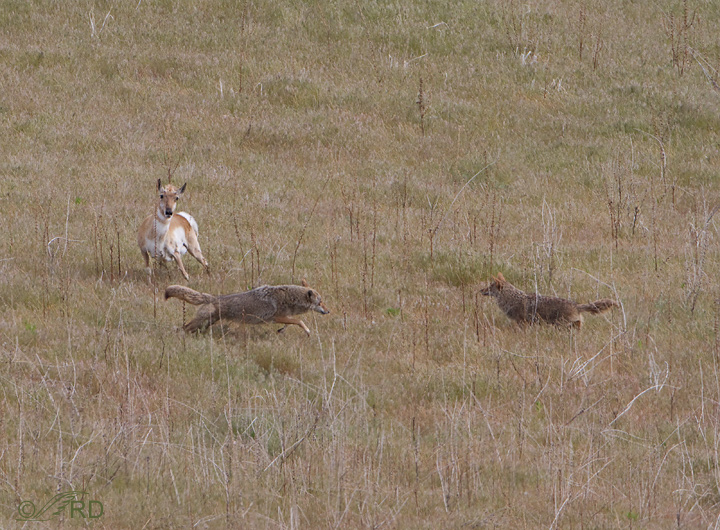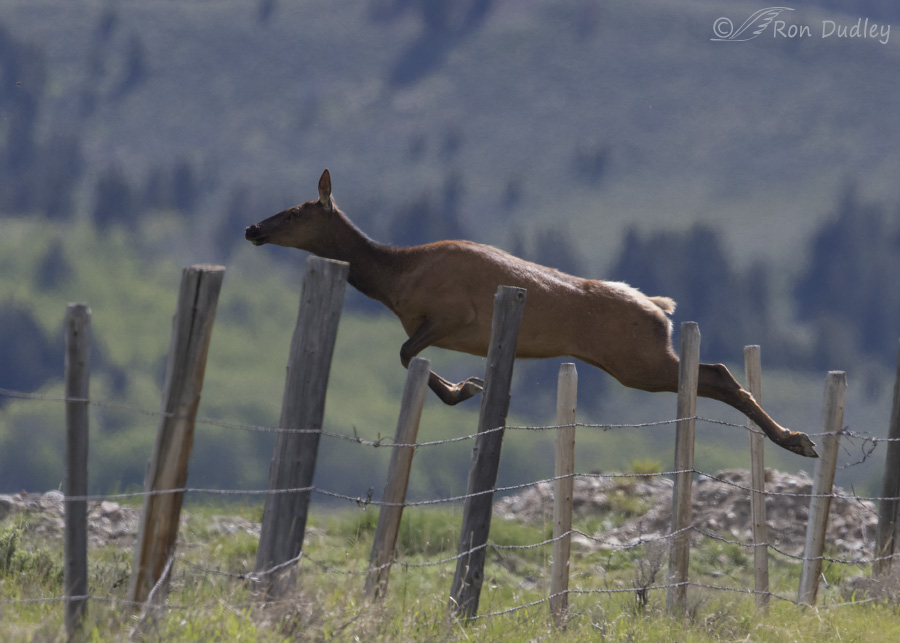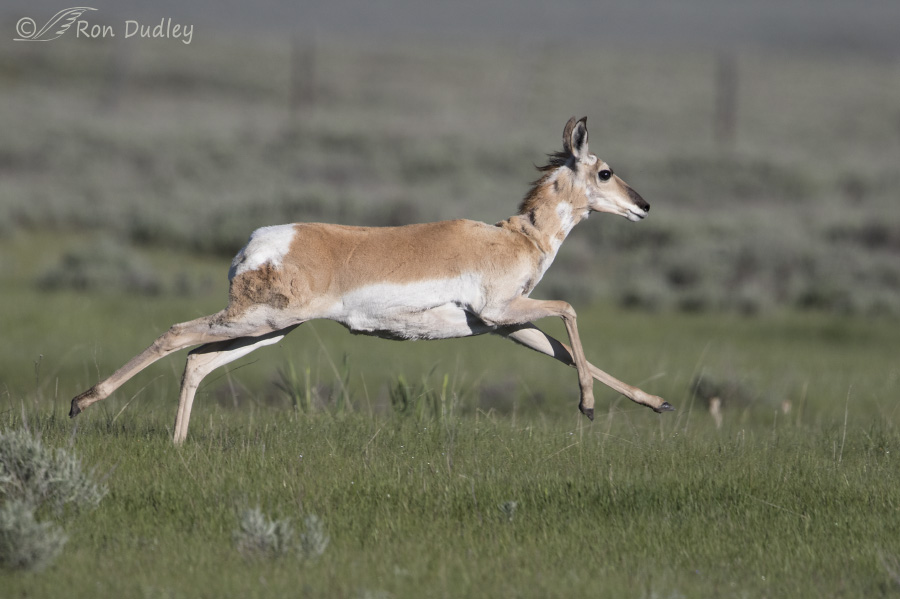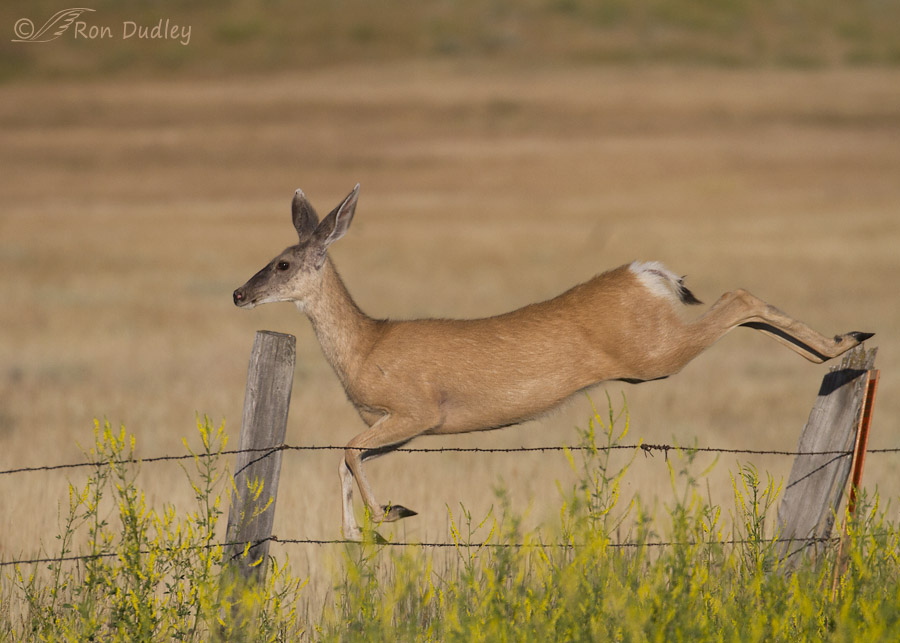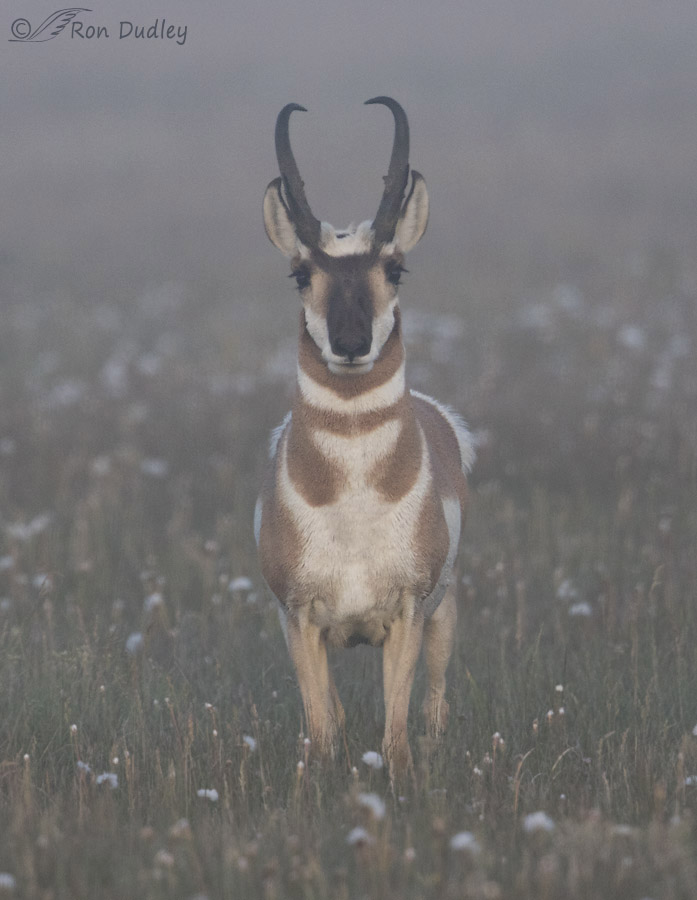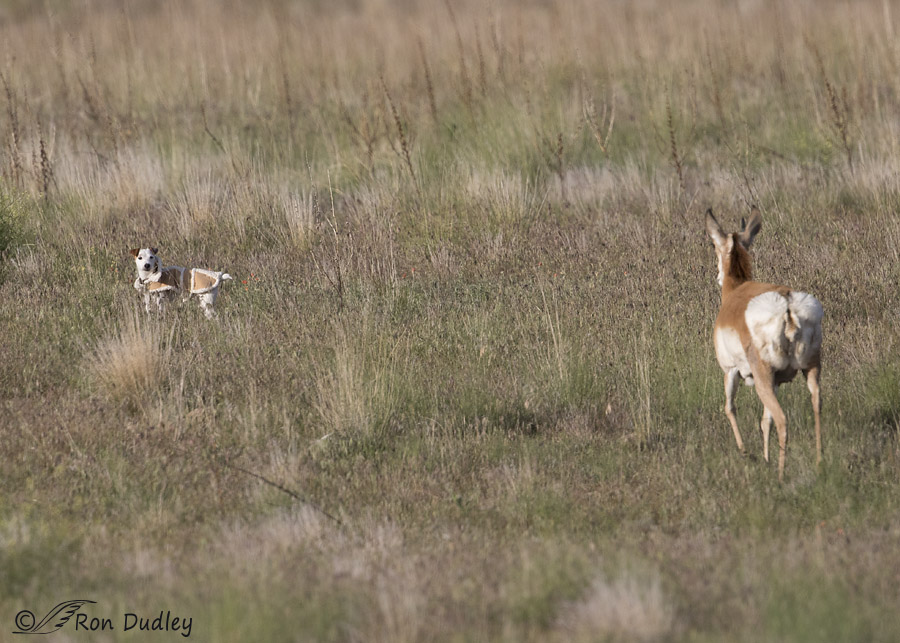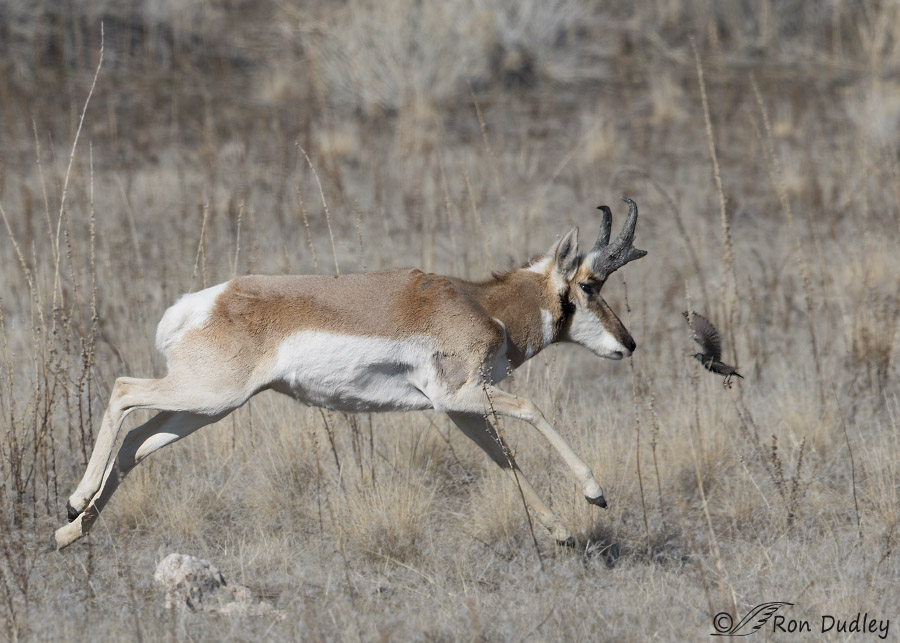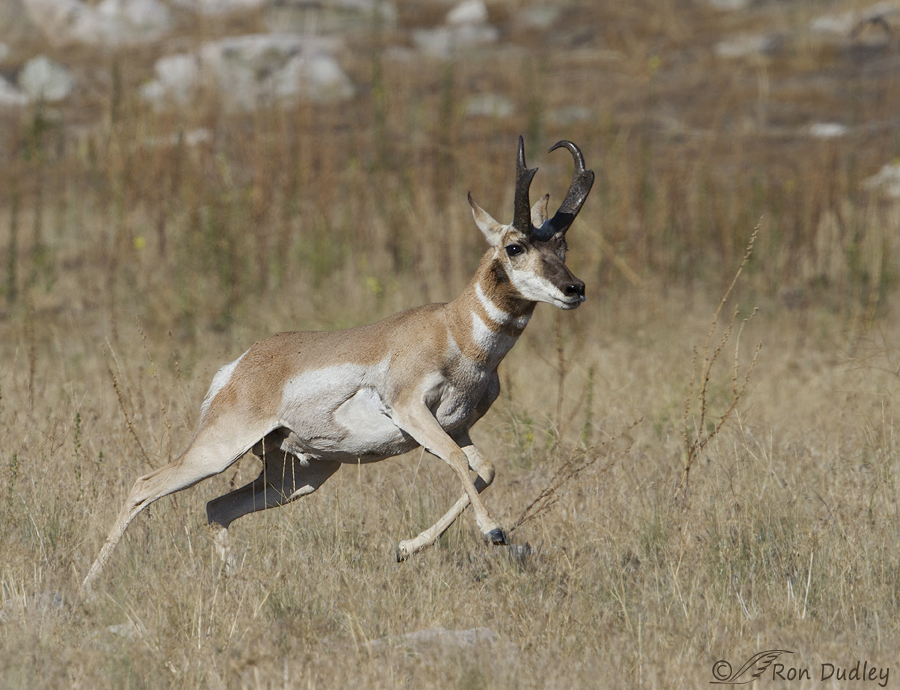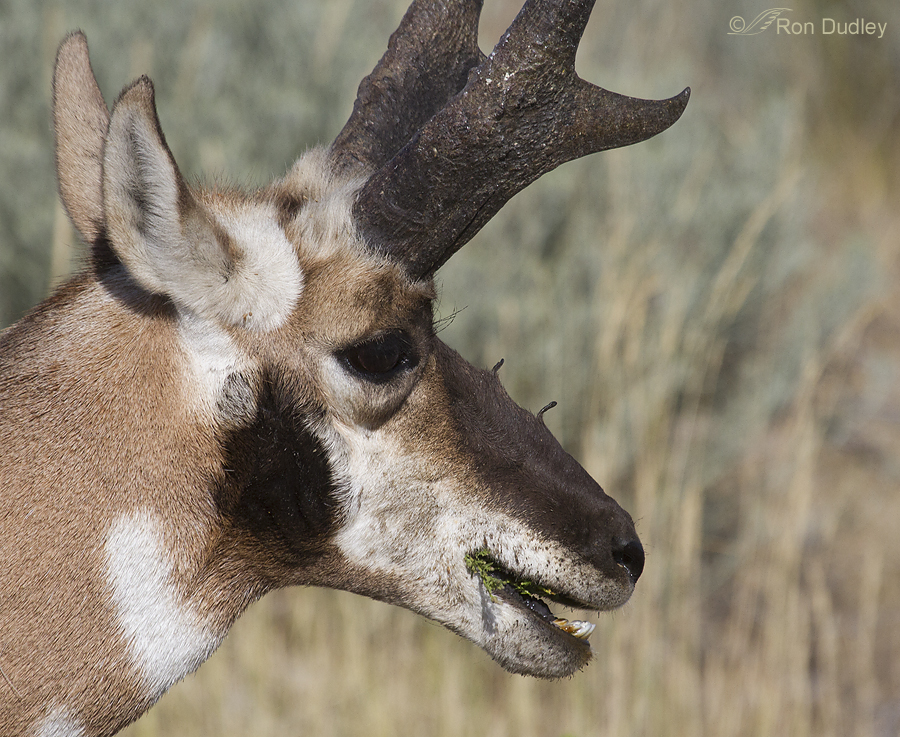Tag: pronghorn
A Pronghorn Fawn And A Near-disaster With Barbed Wire
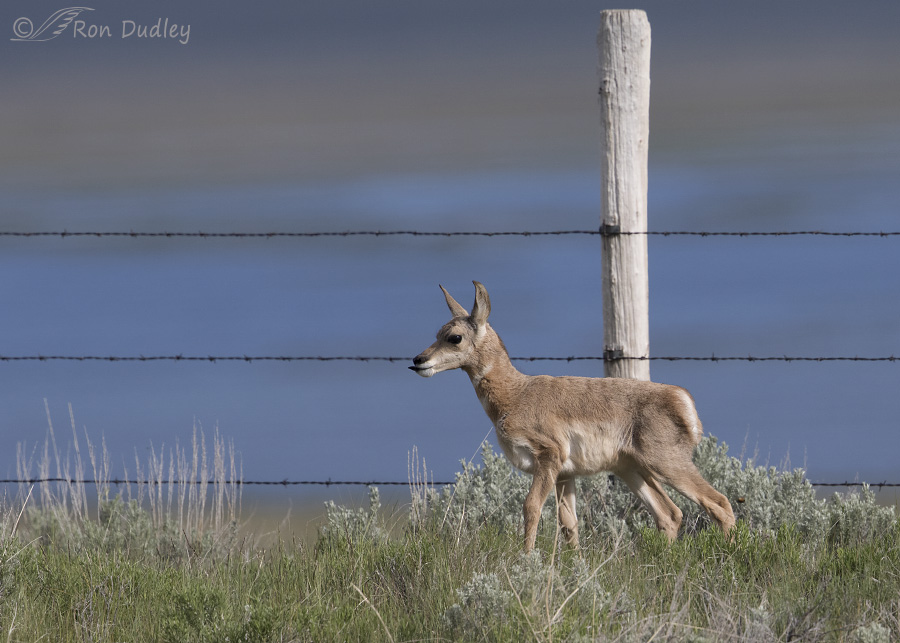
I’m growing weary of featuring wildlife encounters with barbed wire on my blog and I’m sure some of my readers are too (that’s one of the reasons I’ve put this post off for over a month). But dammit, I just can’t stick my head in the sand and pretend this kind of thing doesn’t happen (don’t worry, there are no gory photos in this post).
A Few Mammals From My Recent Camping Trip To Montana And Idaho
Pronghorn Running 50+ MPH (while I’m driving 25 and taking the shot)
Strange-looking Mule Deer Jumping A Fence
Buck Pronghorn Challenging Me In The Fog
Stupidity And Tragedy On Antelope Island
Pronghorn Meets Bird At 40mph
Pronghorn Buck Putting On A Burst Of Speed
Odd Growths On The Face Of A Pronghorn
Pronghorn Fawns
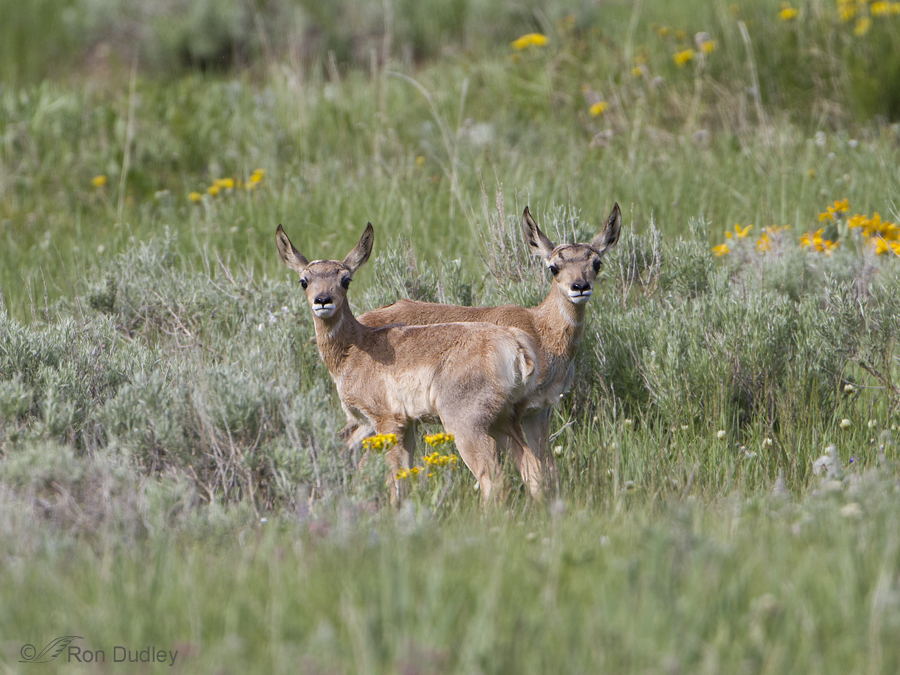
On our last trip to southwest Montana a few weeks ago we encountered a doe pronghorn and her twin fawns. This is cold, high country and fawning season had just begun so other than these two we saw very few fawns, even though pronghorn numbers were high.
I’ll try to avoid the word “cute” throughout this post but it won’t be easy.
Miscellaneous Montana Moments
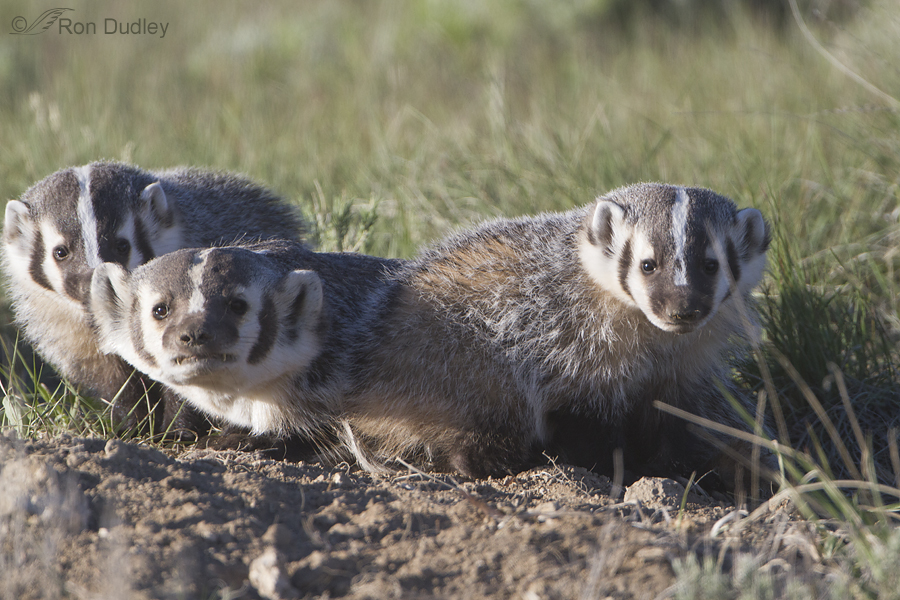
This post is a potpourri of photos from last week’s Montana trip. I’ll include shots of mammals and scenery so there will be no common theme that runs through all the images other than the trip itself. Travelogues are not my forte and some of these images aren’t of the highest quality but they illustrate some interesting behaviors that I wanted to share.
A Few Mammals For A Change
I’m primarily a bird photographer but when I’m in the field I do see other types of wildlife and I’m not hesitant to photograph them in the least.
The Trouble With Harems
Mia and I spent most of this week on a camping/photography trip to Flaming Gorge, Utah and we had some wonderful photographic opportunities with pronghorns. We camped on an isolated peninsula and it happened that a buck pronghorn was using the topography of the peninsula to help him keep control of his very large harem of females. The herd consisted of the lone buck and many females – both adults and juveniles. The male was in full rut and frantic to keep his does together and prevent several other males from running off with them. Does have varying mating strategies. Some does, called “sampling” females, will visit several males during the breeding season if allowed to do so. Others, referred to as “inciting females”, behave as sampling females until they come into estrus when they move off from the males which incites fights and aggressive competition between the males. These females always immediately mate with the winning male. Some females employ a third strategy where they join a single male and remain with him throughout estrus – these does are called “quiet” females. Canon 7D, 1/800, f/5.6, ISO 640, 500 f/4, 1.4 tc This poor buck was trying to control at least 28 females and was struggling mightily to do so. One evening we were at the bottom of a string of small hills just as the sun was setting (thus the warm, golden light in these photos). The buck and his females were strung out on the crest of several of the hills and one of the does was giving him a hard time by…
Critters Among the Sunflowers of Antelope Island
Antelope Island is ablaze with color this fall, provided by the common sunflower Helianthus annus. The sunflower display is really quite spectacular this year – the most prolific I’ve ever seen it. I suspect it’s because of the very wet spring we’ve had. The sunflowers can provide a very pleasing setting for wildlife photography, whether the flowers are in focus along with your subject or out of focus to show off some pleasing and unusual color in the background bokeh. Canon 40D @ 72mm, 1/800, f/6.3, ISO 320, EV +0.33 It’s unusual for me to get so close to a pronghorn that I don’t have to use a telephoto lens but these bucks are in rut right now and they’re so intent on herding their harem of females that they’re not nearly so wary of people and vehicles. So I quickly pulled out my old 40D and shot this handsome fella at only 72mm while he was right next to my pickup and staring intently at his ladies close by. This allowed me to keep many of the sunflowers relatively sharp and gave a different “feel” to the image than I usually get with my big glass. Canon 7D, 1/2500, f/5.6, ISO 640, EV + 0.33, 500 f/4, 1.4 tc In contrast to the previous image, this Vesper Sparrow was shot with my 500mm and 1.4 teleconverter (1120mm with the crop factor of the 7D) at f/5.6 which gave me very little depth of field – just enough to get the sparrow sharp but the sunflowers in the background…


